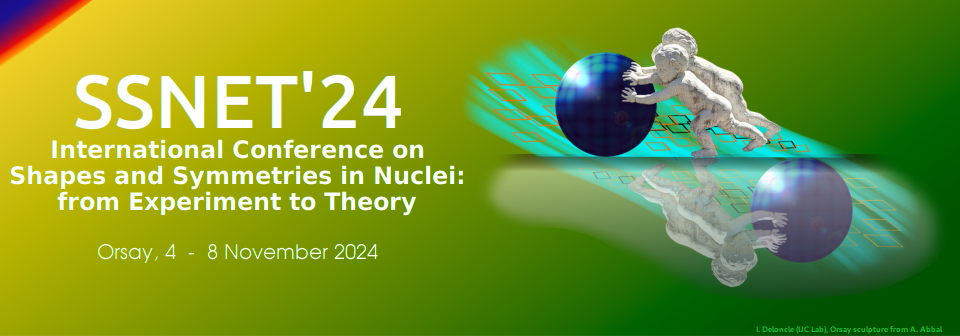Présidents de session
Session 3: Nuclei without axial symmetry
- Jacek Dobaczewski (University of York)
I will present several examples of shape coexistence in neutron rich doubly magic nuclei -always in the framework
of SM-CI calculations in the laboratory frame- that are the portals
to the Islands of Inversion at N=20, 40, and 50. I will pay particular attention to the case of $^{32}$Mg where
the semi-magic configuration and the deformed and superdeformed intruders mix in a very peculiar...
In the traditional view, most heavy nuclei are like axially-symmetric prolate ellipsoids, rotating about one of the short axes. In the present picture, however, the triaxial shape appears in many heavy deformed nuclei, which actually well reproduce experimental data, as confirmed by state-of-the-art Configuration Interaction calculations. Two origins are suggested for the triaxiality: (i)...
In this talk we analyse the structure of super-heavy nuclei in a Beyond Mean Field Approach.
The calculations include the restoration of the particle-number and angular-momentum symmetries and the mixing of different shapes using the generator coordinate method. The importance of the $\gamma$ degree of freedom is highlighted by comparing the triaxial to axial-symmetric calculations...
Transverse wobbling (TW) and longitudinal wobbling (LW) are novel rotational modes in the triaxial nuclei [1]. As the spin increases, the TW changes into LW, caused by the coupling between the angular momenta of particle and core, or in other words, by the entanglement between the particle and core angular momenta. In this talk, we will adopt the von Neumann entropy as a measurement of such...
Nuclei in the mass region 130 uniquely exhibit many different shapes and underlying symmetries, and have drawn considerable research interest. In $^{127}$I, we studied the phenomenon of shape coexistence at low excitation energy, and band termination at higher energy. Interestingly, the collective feature ceases at band termination due to rapid nuclear rotation and particle alignment. A...

